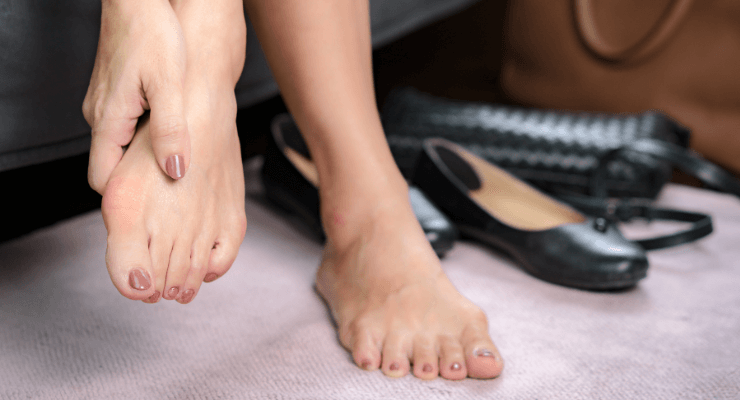
Bunions are a deformity, which often occur when there is too much pressure on the big toe.
What are bunions?
Bunions develop slowly, as pressure on the joint causes the big toe to point towards your other toes. With the added pressure on the joint, your bone changes structure developing a bump. Bunions increase over time, eventually becoming painful to walk or wear shoes.
What are the symptoms of bunions?
Symptoms of bunions include:
- Hard lumps on the sides of your feet, next to your big toes
- Big toe leaning towards your other toes
- Deformity of your lesser toes
- Pain under the lesser toes
- Hard, red or swollen skin
- Pain under the toes and on the lump
What causes bunions?
Some people are more likely than others to develop bunions.
Common risk factors and causes of bunions include:
Your genes – the bone structure at risk of bunions runs through families
Your anatomy – if you have a low arch or uneven weight on the foot, you’re more likely to get bunions
Foot injury – if your foot is injured, this increases your chances of getting bunions
Arthritis – including rheumatoid arthritis
Certain conditions – including those that affect the nerves and muscles, such as polio
How are bunions diagnosed?
Your doctor will ask about your medical history, including details of any prior injuries. They will assess your biomechanical alignment including whether you have joint laxity, flat or high arched feet, your toe alignment, any toe deformities and the movement of the joints.
In some instances, your doctor may take an X-ray or CT scan to look for 3D wear of the joints in a certain position.
How are bunions treated?
Your doctor will recommend some (or all) of the following non-surgical options:
- Footwear advice (your specialist may give you advice on shoes that put less stress on your feet)
- Physiotherapy (you meet with a physiotherapist to learn gentle stretches, strengthening exercises and to get advice on foot and lower limb posture)
- Bunion splints (your specialist may try bunion splints but are not a successful option)
If the above measures don’t work, in some instances you might need surgery. You may be advised on the best surgery for you, including:
- First metatarsal osteotomy – the bunion lump is removed and the toe is realigned by breaking the bone and tightening loose ligaments
- Lapidus first tarsometatarsal joint fusion – used to treat joint laxity or hypermobility
If you’re unsure what treatment you should go for, or the above treatments don’t work for you, our team of expert specialists are here to help.









